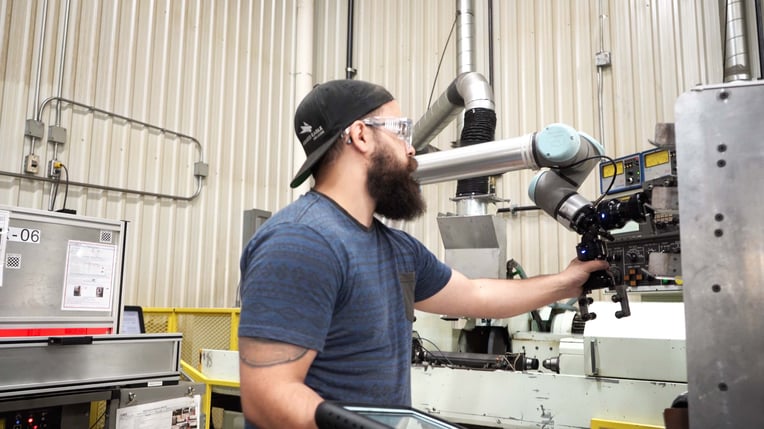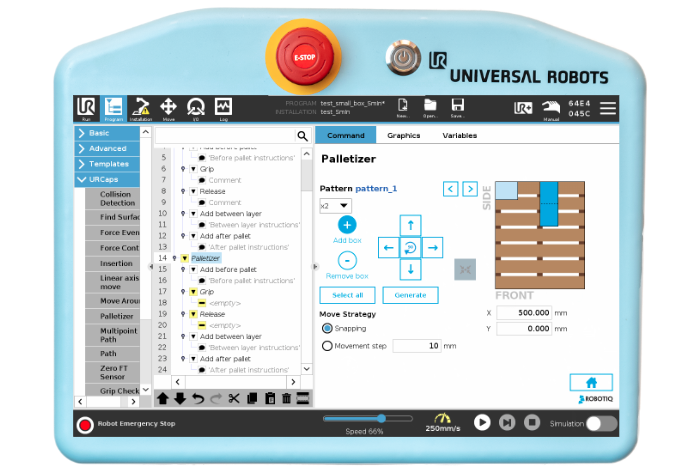Low-cost Automation: Too Good To Be True?

Posted on Sep 30, 2022 in Automation
5 min read time
Like many people, you are probably always on the lookout for ways to reduce costs and improve efficiency in your business.
Low-cost automation looks like a great way to do both… but you might be unsure if it's really worth it.
Automation has become a popular solution for many problems in modern business. Companies just like yours have found that automated technologies can help supplement and support their human workers, improving operations across the board.
The problem? Automation has been prohibitively expensive for many businesses.
There are now various low-cost options that can allow you to automate tasks at a fraction of the cost.
With robotic automation, collaborative robots are now an accepted low-cost solution that offers many of the same advantages as expensive conventional industrial robots.
But does low-cost automation live up to the hype?
What is classed as low-cost automation?
Low-cost automation means any technology that creates some degree of automation with a low financial investment. Often this involves automating around existing equipment, tools, methods, and people.
With a low-cost solution, the payback period for your investment is typically short, usually in the order of a few weeks to less than a year.
In other words, low-cost automation means "generating maximum benefit from automation with limited resources."
When most people think of industrial robotics, they imagine large, expensive machines that are the centerpiece of a factory. While such robots can be useful for certain tasks, they are not the most economical option and often require significant upheaval to incorporate them into your processes.
In many cases, it makes more sense to use a good low-cost automation option, like collaborative robots.
Collaborative robots (aka cobots) are a great example of low-cost automation. They tend to be smaller and less expensive than conventional industrial robots, and you can use them for an impressive range of tasks.

3 benefits low-cost automation for your businesses
There are various compelling benefits that your business can reap from implementing low-cost automation.
Here are 3 of the most notable benefits:
1. Reduced costs
Clearly, a key benefit of low-cost automation solutions like cobots is that they are less expensive than traditional industrial robots.
However, savings often involve more than just the upfront cost of the equipment. Cobots also require less engineering time and add-on technology to get working.
2. Improved efficiency
As with any automation technology, you can improve your efficiency with cobots. This allows you to complete tasks faster and more consistently.
The shorter integration time of cobots also makes the deployments more efficient than with conventional automation.
3. Increased capacity
With the help of good low-cost automation solution, you can achieve capabilities you wouldn't otherwise be able to afford.
This added capacity can allow you to expand your operations and take on new projects that would have been out of your reach before.
Overall, the benefits of low-cost automation can be valuable for businesses of all sizes.
The question is… what are the potential downsides?
Common uncertainties around low-cost automation
People are often hesitant to adopt low-cost versions of technology solutions, and with good reason.
Often low-cost means low quality.
You might be concerned that you can save money by using low-cost robotics, but that these savings may come at the expense of quality or safety.
Will a low-cost solution be less accurate or less safe than conventional automation?
Another concern you might have is that low-cost automation won't be able to support your company's growth. You might worry that you'll later need to invest in more expensive automation when your operations grow.
Will the low-cost solution become useless when you want to increase your production?
Thankfully, the answer to both questions is no.
Collaborative robots are just as accurate as industrial robots and even safer. They are also more flexible than conventional automation, so more suited to rapid company growth.
Is low-cost automation too good to be true?
With the right type of low-cost automation, concerns like those above are unfounded.
With a technology like collaborative robotics, low-cost automation is not only possible, it is also safe and scalable.
Cobots are designed to work seamlessly alongside humans. You can easily integrate them into existing production lines and improve a vast range of operations. They are ideal for businesses that want to automate without making an expensive investment.
In addition, cobots are extremely versatile and often just as accurate as a conventional industrial robots. When you deploy them correctly, they can save you money while providing high-quality results.
How to implement low-cost automation in your business
Businesses of all sizes can benefit from low-cost robotic automation.
What steps should you take to start using collaborative robotic automation in your business?
Here are a few tips to get you started:
-
Decide which tasks can be automated. Some tasks are easier to automate than others. A good place to start is to look at our applications page for a list of tasks that are easy to deploy.
-
Evaluate different solutions. There are various options on the market for automating particular tasks. These range from very simple to deploy to extremely difficult. Weigh up the costs with how challenging the robot will be to deploy.
-
Pick a solution and start automating! When you have found a suitable robotic solution that suits your budget and needs, get in contact with the supplier and begin the process of automation.
Low-cost automation can be a great way to improve your business' efficiency without harming your bottom line.
By automating simple, high-impact tasks with a technology like collaborative robotics, you can free up time and resources to focus on more important tasks in your business.
Is low-cost automation worth it? It certainly can be! With the right technology, you can start automating tasks in your business and seeing actual results.
Check out our applications page to see how low-cost automation can be implemented in your business.
What concerns do you have about low-cost automation? Tell us in the comments below or join the discussion on LinkedIn, Twitter, Facebook, or the DoF professional robotics community.Operator working with a collaborative robot in a cnc shop








Leave a comment